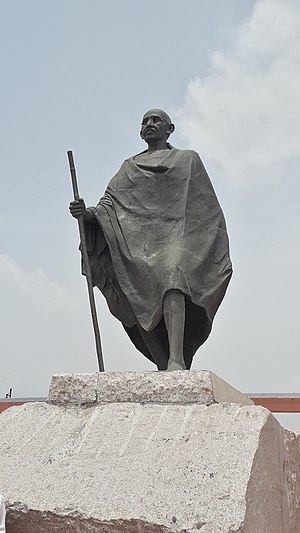The marvelous monument offers an experiential journey to visitors and recreates the spirit and energy of the historic Dandi March at the site, where Gandhiji broke the Salt Law imposed by the British.
The Dandi March demonstrated the effectiveness of non-violent civil disobedience as a form of protest for the first time.BRAND POST
National Salt Satyagraha Memorial: Recreating the historic Dandi March
The marvelous monument offers an experiential journey to visitors and recreates the spirit and energy of the historic Dandi March at the site, where Gandhiji broke the Salt Law imposed by the British.By HT Brand StudioUPDATED ON FEB 08, 2021 07:36 PM IST
The Salt Satyagraha March or The Dandi March of 1930 as it is popularly known, was a landmark in the history of Indian freedom struggle. As a part of the Civil Disobedience Movement against the British rule, 80 Satyagrahis led by Mahatma Gandhi marched 241-miles from Sabarmati Ashram, Ahmedabad to the coastal village of Dandi and broke the Salt Law imposed by the British. As was the symbolic nature of the event, it inspired millions of Indians to join the freedom struggle and brought worldwide attention to the movement. The Dandi March demonstrated the effectiveness of non-violent civil disobedience as a form of protest for the first time.
Spread over a 15-acre land and located in the coastal town of Dandi, where the Salt March ended on 6 April 1930 and the British salt monopoly was broken, the ‘National Salt Satyagraha Memorial’, Dandi, Gujarat, is conceived as an experiential journey recreating the spirit and the energy of the 1930 Dandi March led by Mahatma Gandhi and 80 of his fellow Satyagrahis. The visitors go through the monument step-by-step in order to visualise and understand the history of the historic Salt March and the methodology of Satyagraha, which finally led to India’s Independence from the British colonial rule.
The Pyramid of Light
The A-Frame: Stylised hands raised up in the sky, holding at the top a simulated salt crystal to form the canopy. Another unique feature is the laser lights which rises up and illuminates the glass crystal at night to make it a visually enhancing experience.
Solar Trees
To reflect the ethos of self-sufficiency imbibed by Mahatma Gandhi, 40 Solar Trees where designed, developed and installed at the memorial. It makes this memorial a net zero-energy project where all the energy required is produced in the memorial itself.
Salt Making Pans
Salt-Making Pans at the Memorial Complex allow the visitors to personally experience the process of salt-making and also make a pinch of salt to be taken away as a memory from the visit to the Memorial.
How to get there
• By Road – Surat lies 234 km from Ahmedabad, 131km from Vadodara, and 297 km from Mumbai. Bus stations, both ST and private, are on the eastern edge of the city.
• By Train – Surat in on the main broad Gage line between Mumbai and Ahmedabad
• By Air – Various domestic flights connecting metros and other major cities are operational from the Surat Airport



Test